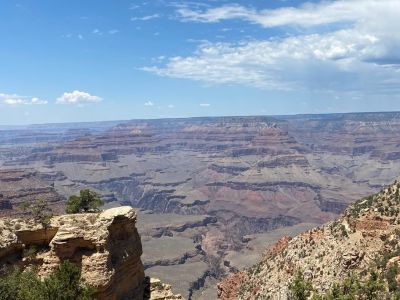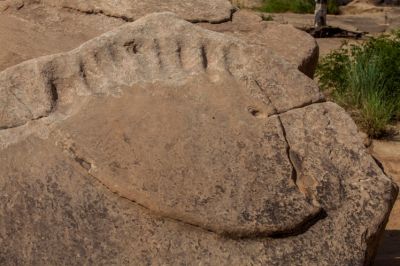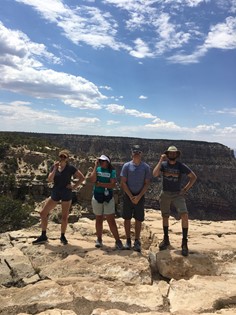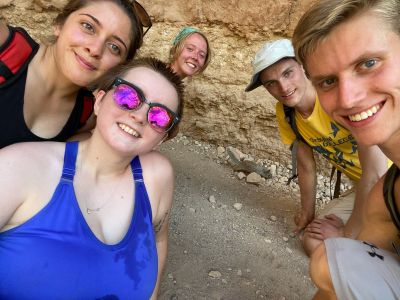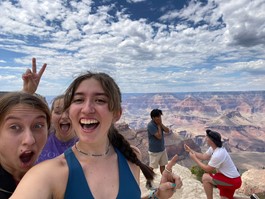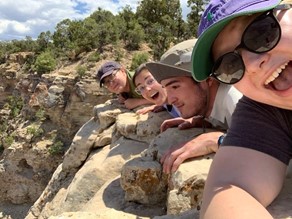Learnings from the Oral Historian. Oh, and the Grand Canyon!
Josh Friesen is a Senior biochemistry major with a Spanish minor.
This past Thursday, we were fortunate enough to be able to spend a day at Grand Canyon National Park, and naturally it was exciting to be able to visit such an internationally renowned place. It did not fail to disappoint, and I was struck by the sheer size and beauty of the canyon, in which gorge after gorge continues off into the distance in each direction for hundreds of miles. Viewing the Grand Canyon was yet another reinforcement for me of how much beauty is contained in the landscape of Arizona. I have thoroughly enjoyed the scenery on this trip, but that’s easy for me to say while I can sit indoors with air conditioning, running water, and a fridge full of groceries.
Thus, throughout my time here, I have also come to realize just how imposing and difficult this landscape can be to live in. For most of the last few days, we have experienced temperatures of over 100 degrees Fahrenheit. In our time in Arizona, I have also witnessed only one natural body of water, a small stream and watering hole running through Rock Art Canyon near Winslow, Arizona.
Navigating this landscape and climate made me reflect on the presentation given by Lance, one of our hosts here at the Peace Academic Center, and his father Eric. Eric is the oral historian of the Hopi tribe, a position of great importance. Unsurprisingly, he is a wealth of knowledge, as is his son Lance, and they talked to us about the history of the Hopi and their ancestors dating back thousands of years. Something that stuck out to me was the brilliance of these peoples in having such an understanding of the area and the ability to navigate and survive in the tough conditions.
At Rock Art Ranch, we saw a petroglyph of a woman giving birth and in the presentation we learned that when standing in front of her, a person can see off in the distance a triangular arrowhead shape in a mesa many miles off. Under that mesa is another source of water, and when standing under that mesa, another arrowhead shape is revealed on the horizon miles away, leading the way to the next nearest source of water. In this way, Lance and Eric informed us, one could navigate all the way from Mexico City to northern Arizona simply by following this path.
Eric and Lance also showed us pictures of a rock containing a full map of the area around Rock Art Canyon with bear claws etched on the map corresponding to huge bear claws carved into the landscape to help with following the map. They shared many other instances in which petroglyphs and other markings were used to create a complex system of communication about the land, climate, and seasons. I found even just these small examples a powerful experience to marvel at the knowledge and ingenuity of the indigenous groups of this area dating back thousands of years.
